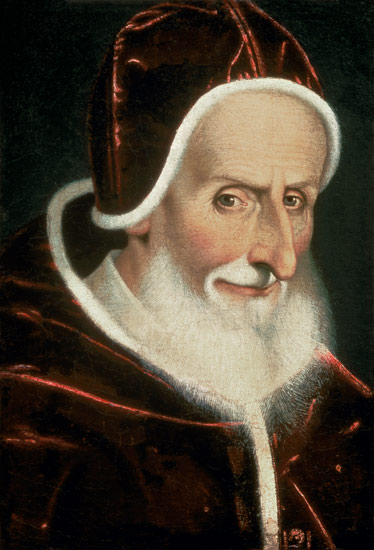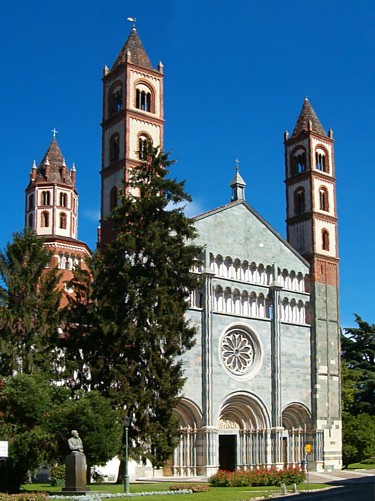|
Andrea Amati
Andrea Amati was a luthier, from Cremona, Italy. Amati is credited with making the first instruments of the violin family that are in the form we use today. Several of his instruments survive to the present day, and some of them can still be played. Many of the surviving instruments were among a consignment of 38 instruments delivered to Charles IX of France in 1564. Charles IX of France It is estimated that Amati made some 38 instruments between 1560 and 1574 for the Queen Regent of France Catherine de Medici on behalf of her young son, Charles IX of France; one of these was a gilded bass violin, elaborately painted with royal symbols, called ''The King''. There is some uncertainty about the exact date the instrument was crafted; ''The King's'' "label" gives the date as 1572, but some scholars have proposed an earlier date. Much of the collection was destroyed during the French Revolution but some pieces were recovered by Giovanni Battista Viotti's student M. J. B. Cartier ... [...More Info...] [...Related Items...] OR: [Wikipedia] [Google] [Baidu] |
Cremona
Cremona (, also ; ; lmo, label= Cremunés, Cremùna; egl, Carmona) is a city and ''comune'' in northern Italy, situated in Lombardy, on the left bank of the Po river in the middle of the ''Pianura Padana'' (Po Valley). It is the capital of the province of Cremona and the seat of the local city and province governments. The city of Cremona is especially noted for its musical history and traditions, including some of the earliest and most renowned luthiers, such as Giuseppe Guarneri, Antonio Stradivari, Francesco Rugeri, Vincenzo Rugeri, and several members of the Amati family. History Ancient Celtic origin Cremona is first mentioned in history as a settlement of the Cenomani, a Gallic (Celtic) tribe that arrived in the Po valley around 400 BC. However, the name Cremona most likely dates back to earlier settlers and puzzled the ancients, who gave many fanciful interpretations. Roman military outpost In 218 BC the Romans established on that spot their first military outpo ... [...More Info...] [...Related Items...] OR: [Wikipedia] [Google] [Baidu] |
Vermillion, South Dakota
Vermillion ( lkt, Waséoyuze; "The Place Where Vermilion is Obtained") is a city in and the county seat of Clay County. It is in the southeastern corner of South Dakota, United States, and is the state's 12th-largest city. According to the 2020 Census, the population was 11,695. The city lies atop a bluff near the Missouri River. The area has been home to Native American tribes for centuries. French fur traders first visited in the late 18th century. Vermillion was founded in 1859 and incorporated in 1873. The name refers to the Lakota name: ''wa sa wak pa'la'' (red stream). Home to the University of South Dakota, Vermillion has a mixed academic and rural character: the university is a major academic institution for the state, with its only law and medical schools and its only AACSB-accredited business school. Major farm products include corn, soybeans, and alfalfa. History Lewis and Clark camped at the mouth of the Vermillion River near the present-day town on August 24, ... [...More Info...] [...Related Items...] OR: [Wikipedia] [Google] [Baidu] |
Bavaria
Bavaria ( ; ), officially the Free State of Bavaria (german: Freistaat Bayern, link=no ), is a state in the south-east of Germany. With an area of , Bavaria is the largest German state by land area, comprising roughly a fifth of the total land area of Germany. With over 13 million inhabitants, it is second in population only to North Rhine-Westphalia, but due to its large size its population density is below the German average. Bavaria's main cities are Munich (its capital and largest city and also the third largest city in Germany), Nuremberg, and Augsburg. The history of Bavaria includes its earliest settlement by Iron Age Celtic tribes, followed by the conquests of the Roman Empire in the 1st century BC, when the territory was incorporated into the provinces of Raetia and Noricum. It became the Duchy of Bavaria (a stem duchy) in the 6th century AD following the collapse of the Western Roman Empire. It was later incorporated into the Holy Roman Empire, ... [...More Info...] [...Related Items...] OR: [Wikipedia] [Google] [Baidu] |
Viol
The viol (), viola da gamba (), or informally gamba, is any one of a family of bowed, fretted, and stringed instruments with hollow wooden bodies and pegboxes where the tension on the strings can be increased or decreased to adjust the pitch of each of the strings. Frets on the viol are usually made of gut, tied on the fingerboard around the instrument's neck, to enable the performer to stop the strings more cleanly. Frets improve consistency of intonation and lend the stopped notes a tone that better matches the open strings. Viols first appeared in Spain in the mid-to-late 15th century, and were most popular in the Renaissance and Baroque (1600–1750) periods. Early ancestors include the Arabic ''rebab'' and the medieval European vielle,Otterstedt, Annette. ''The Viol: History of an Instrument. ''Kassel: Barenreiter;-Verlag Karl Votterle GmbH & Co; 2002. but later, more direct possible ancestors include the Venetian ''viole'' and the 15th- and 16th-century Spanish '' vih ... [...More Info...] [...Related Items...] OR: [Wikipedia] [Google] [Baidu] |
Pope Pius V
Pope Pius V ( it, Pio V; 17 January 1504 – 1 May 1572), born Antonio Ghislieri (from 1518 called Michele Ghislieri, O.P.), was head of the Catholic Church and ruler of the Papal States from 8 January 1566 to his death in May 1572. He is venerated as a saint of the Catholic Church. He is chiefly notable for his role in the Council of Trent, the Counter-Reformation, and the standardization of the Roman Rite within the Latin Church. Pius V declared Thomas Aquinas a Doctor of the Church. As a cardinal, Ghislieri gained a reputation for putting orthodoxy before personalities, prosecuting eight French bishops for heresy. He also stood firm against nepotism, rebuking his predecessor Pope Pius IV to his face when he wanted to make a 13-year-old member of his family a cardinal and subsidize a nephew from the papal treasury. [...More Info...] [...Related Items...] OR: [Wikipedia] [Google] [Baidu] |
Sotheby's
Sotheby's () is a British-founded American multinational corporation with headquarters in New York City. It is one of the world's largest brokers of fine and decorative art, jewellery, and collectibles. It has 80 locations in 40 countries, and maintains a significant presence in the UK. Sotheby's was established on 11 March 1744 in London by Samuel Baker, a bookseller. In 1767 the firm became Baker & Leigh, after George Leigh became a partner, and was renamed to Leigh and Sotheby in 1778 after Baker's death when Leigh's nephew, John Sotheby, inherited Leigh's share. Other former names include: Leigh, Sotheby and Wilkinson; Sotheby, Wilkinson and Hodge (1864–1924); Sotheby and Company (1924–83); Mssrs Sotheby; Sotheby & Wilkinson; Sotheby Mak van Waay; and Sotheby's & Co. The American holding company was initially incorporated in August 1983 in Michigan as Sotheby's Holdings, Inc. In June 2006, it was reincorporated in the State of Delaware and was renamed Sotheby's. In ... [...More Info...] [...Related Items...] OR: [Wikipedia] [Google] [Baidu] |
Vercelli
Vercelli (; pms, Vërsèj ), is a city and ''comune'' of 46,552 inhabitants (January 1, 2017) in the Province of Vercelli, Piedmont, northern Italy. One of the oldest urban sites in northern Italy, it was founded, according to most historians, around 600 BC. The city is situated on the Sesia River in the plain of the Po River between Milan and Turin. It is an important centre for the cultivation of rice and is surrounded by rice paddies, which are flooded in the summer. The climate is typical of the Po Valley with cold, foggy winters ( in January) and oppressive heat during the summer months ( in July). Rainfall is most prevalent during the spring and autumn; thunderstorms are common in the summer. The languages spoken in Vercelli are Italian and Piedmontese; the variety of Piedmontese native to the city is called ''Varsleis''. The world's first university funded by public money was established in Vercelli in 1228 (the seventh university founded in Italy), but was closed in ... [...More Info...] [...Related Items...] OR: [Wikipedia] [Google] [Baidu] |
Saronno
Saronno (; lmo, Saronn ) is a ''comune'' of Lombardy, Italy, in the province of Varese. It received the honorary title of city with a presidential decree in 1960. With an estimated population of 39,351 inhabitants, it is the most densely populated among the big municipalities in its province. The place is well known for its apricot kernel biscuits ( ''amaretti'') and liqueur ('' amaretto''), and is also a relevant manufacturing town. Main sights Madonna dei Miracoli The pilgrimage church of the ''Madonna dei Miracoli'', begun on 8 May 1498 by Vincenzo Dell'Orto, has a dome with very fine architecture on the outside. It was built at three times: the Renaissance part from 1498 to 1516; it includes the apse, the chancel, the dome and the bell tower; in 1556 the sacristy was added; in the end from 1570 to the beginning of the XVII century two other spans were added to the aisles and the facade was erected. During the same period, "l'Hostaria dell'Angelo” was built to restore pilgr ... [...More Info...] [...Related Items...] OR: [Wikipedia] [Google] [Baidu] |
Gaudenzio Ferrari
Gaudenzio Ferrari (c. 1471 – 11 January 1546) was an Italian painter and sculptor of the Renaissance. Biography Gaudenzio was born to Franchino Ferrari at Valduggia in the Valsesia in the Duchy of Milan. Valduggia is now in the Province of Vercelli in Piedmont. He is said to have first learned the art of painting at Vercelli from Gerolamo Giovenone. He subsequently studied in Milan, in the school of the Cathedral artisan Giovanni Stefano Scotti, and perhaps alongside Bernardino Luini. Circa 1504 he proceeded to Florence. It was once thought that he later moved to Rome. He died in Milan. Gaudenzio was not related to Defendente Ferrari (c.1490–1535) a painter from Chivasso, nor to Eusebio Ferrari (1508–1533) the painter from Vercelli. Mature work His initial pictorial style may be considered as derived mainly from the old Milanese school, which had imbibed the classic influence of Leonardo and pupils such as Bramantino. However, the provincial impetus was also stron ... [...More Info...] [...Related Items...] OR: [Wikipedia] [Google] [Baidu] |
Violoncello
The cello ( ; plural ''celli'' or ''cellos'') or violoncello ( ; ) is a Bow (music), bowed (sometimes pizzicato, plucked and occasionally col legno, hit) string instrument of the violin family. Its four strings are usually intonation (music), tuned in perfect fifths: from low to high, scientific pitch notation, C2, G2, D3 and A3. The viola's four strings are each an octave higher. Music for the cello is generally written in the bass clef, with tenor clef, and treble clef used for higher-range passages. Played by a ''List of cellists, cellist'' or ''violoncellist'', it enjoys a large solo repertoire Cello sonata, with and List of solo cello pieces, without accompaniment, as well as numerous cello concerto, concerti. As a solo instrument, the cello uses its whole range, from bassline, bass to soprano, and in chamber music such as string quartets and the orchestra's string section, it often plays the bass part, where it may be reinforced an octave lower by the double basses. Figure ... [...More Info...] [...Related Items...] OR: [Wikipedia] [Google] [Baidu] |





